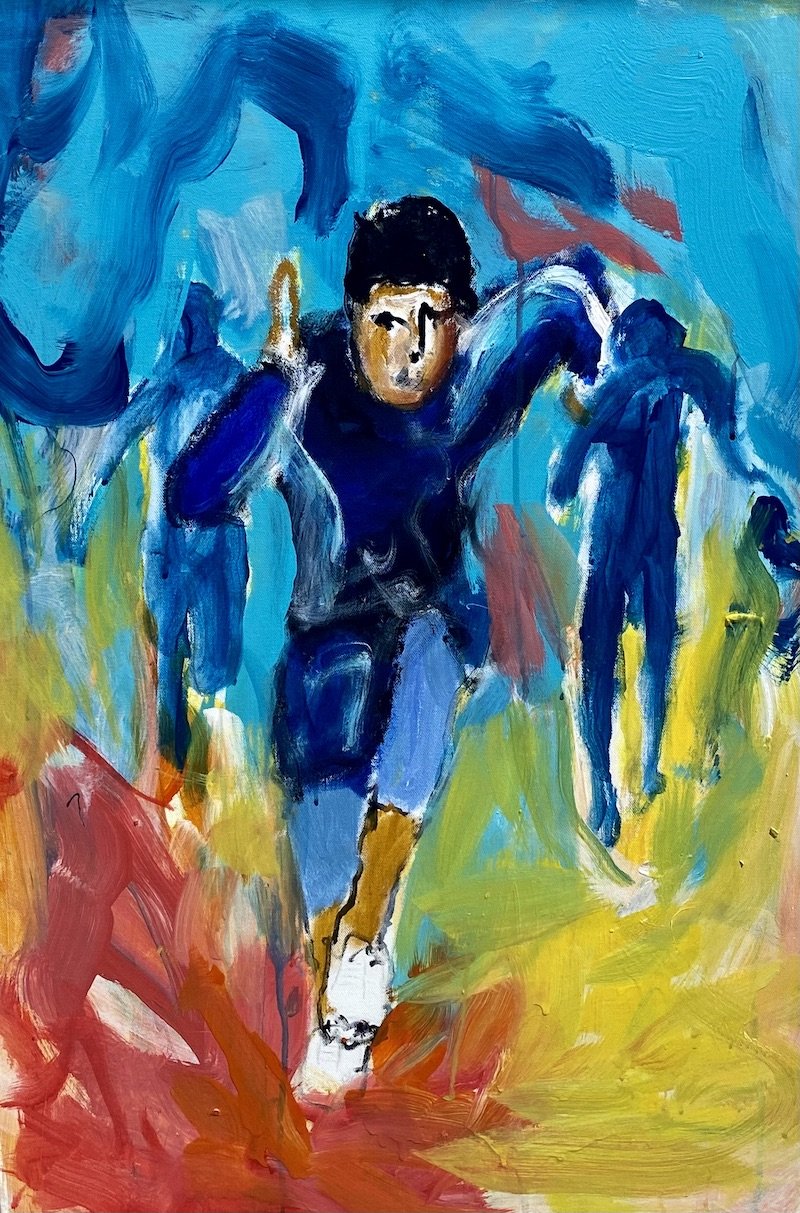Emotion in Motion
The energy is palpable when you enter the Harrison Gallery and view Johnson Simon's lastest exhibition, Emotion Motion. The show will hang throughout August and be available at our online gallery till the end of September. Read why this show is so important to Johnson and for insights from our summer intern, Danielle.
“I draw inspiration from personal experience and from those in the community around me. I always say that I can’t do any of this work without being in community. These are all scenes from everyday life, the growth and struggle through the things that we face, such as a competition, heartbreak, and character-building moments. Images of dancers represent internal struggle and scenes from life represent external struggles and growth that we all experience. I invite you to discover and relate to your own personal emotions and experiences. Dancers from Herron High School and Kids Dance Outreach were involved in the process of creating the work for this exhibit.” - Johnson Simon
Looking at Johnson Simon’s work, I can almost see his hand and brush frantically swipe across the canvas in quick strokes, as if I were watching a timelapse of his process. There’s a certain feeling of wildness. A yellow streak there, thicker impasto-like strokes of red here, dripping shades of blue sliding down the canvas until wet turns dry. Every time Simon picks up his brush, a new texture flies across the painting, igniting his work in a flurry of life long after completion.
Sprint, acrylic on canvas, 24 x 36
Johnson Simon’s show is located in the Harrison Gallery. Emotion in Motion depicts bikers, swimmers, runners, and dancers, among other subject matters. While the human figures are trapped in one singular pose, as are the limitations of two-dimensional work, the way Simon paints them breaks through that barrier and gives them the illusion of movement. The flare of a skirt, the motion blur of an arm, a leg, the very space around them seemingly moving alongside them. Every single square inch of canvas appears alive and active.
It is clever of Simon to blur out the faces. Perhaps this decision was to give people like me the opportunity and space to become the figure in the piece. Maybe he erased the facial features because he knew movement blurs the face beyond recognition in that single millisecond or to bring more focus to the body’s language.


